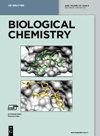在扩张型心肌病的 iPSC 模型中集成机器学习和多模态数据融合,实现病理表型特征识别。
IF 2.9
4区 生物学
Q3 BIOCHEMISTRY & MOLECULAR BIOLOGY
引用次数: 0
摘要
在对人类模型系统的数据进行自动分析时,要准确预测分子病理表型特征,整合多个数据源是一项挑战。在这里,我们应用基于机器学习的数据整合来区分扩张型心肌病(DCM)亚细胞水平的病理表型特征。我们采用了一种人类诱导多能干细胞衍生心肌细胞(iPSC-CM)模型,与同源健康(WT)对照iPSC-CMs相比,该模型中的肌节蛋白肌钙蛋白T(TnT)发生了突变,即TnT-R141W。我们建立了一种基于多模态数据融合(MDF)的分析方法,以整合 Ca2+ 瞬态、肌力测量和收缩力记录的源数据集。我们还采集了单细胞、细胞单层和三维球状 iPSC-CM 模型这三种额外层类型的数据。在数据分析、数值转换以及融合 Ca2+ 瞬态、力测量和收缩力记录数据时,采用了基于非负盲解卷积(NNBD)的方法。通过使用 XGBoost 算法,我们发现融合单细胞、单层和三维球状 iPSC-CM 模型(≥92 ± 0.08 %)以及融合 Ca2+ 瞬态、搏动力和收缩力模型(>96 ± 0.04 %)的预测准确率很高。MDF 和 XGBoost 的整合为预测复杂人类疾病模型(如 DCM iPSC-CM)的病理表型特征提供了高效的分析工具。本文章由计算机程序翻译,如有差异,请以英文原文为准。
Integrated machine learning and multimodal data fusion for patho-phenotypic feature recognition in iPSC models of dilated cardiomyopathy.
Integration of multiple data sources presents a challenge for accurate prediction of molecular patho-phenotypic features in automated analysis of data from human model systems. Here, we applied a machine learning-based data integration to distinguish patho-phenotypic features at the subcellular level for dilated cardiomyopathy (DCM). We employed a human induced pluripotent stem cell-derived cardiomyocyte (iPSC-CM) model of a DCM mutation in the sarcomere protein troponin T (TnT), TnT-R141W, compared to isogenic healthy (WT) control iPSC-CMs. We established a multimodal data fusion (MDF)-based analysis to integrate source datasets for Ca2+ transients, force measurements, and contractility recordings. Data were acquired for three additional layer types, single cells, cell monolayers, and 3D spheroid iPSC-CM models. For data analysis, numerical conversion as well as fusion of data from Ca2+ transients, force measurements, and contractility recordings, a non-negative blind deconvolution (NNBD)-based method was applied. Using an XGBoost algorithm, we found a high prediction accuracy for fused single cell, monolayer, and 3D spheroid iPSC-CM models (≥92 ± 0.08 %), as well as for fused Ca2+ transient, beating force, and contractility models (>96 ± 0.04 %). Integrating MDF and XGBoost provides a highly effective analysis tool for prediction of patho-phenotypic features in complex human disease models such as DCM iPSC-CMs.
求助全文
通过发布文献求助,成功后即可免费获取论文全文。
去求助
来源期刊

Biological Chemistry
生物-生化与分子生物学
CiteScore
7.20
自引率
0.00%
发文量
63
审稿时长
4-8 weeks
期刊介绍:
Biological Chemistry keeps you up-to-date with all new developments in the molecular life sciences. In addition to original research reports, authoritative reviews written by leading researchers in the field keep you informed about the latest advances in the molecular life sciences. Rapid, yet rigorous reviewing ensures fast access to recent research results of exceptional significance in the biological sciences. Papers are published in a "Just Accepted" format within approx.72 hours of acceptance.
 求助内容:
求助内容: 应助结果提醒方式:
应助结果提醒方式:


